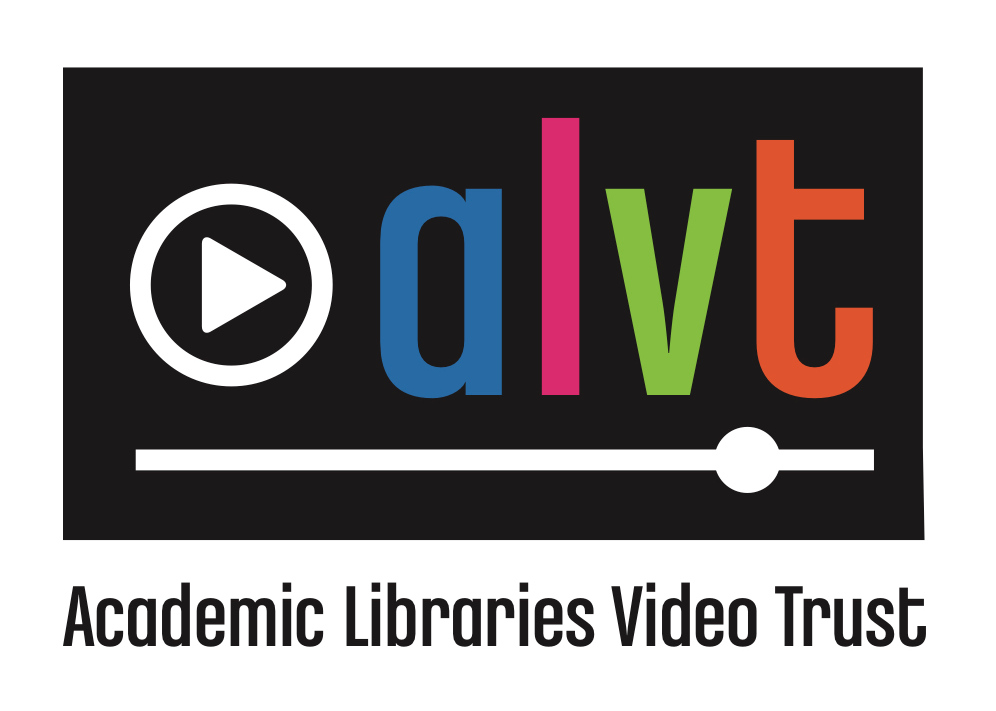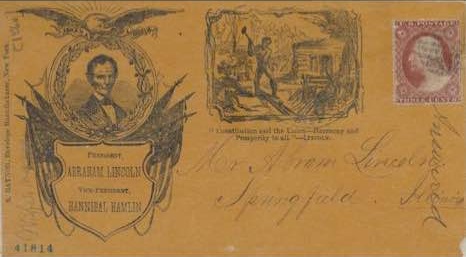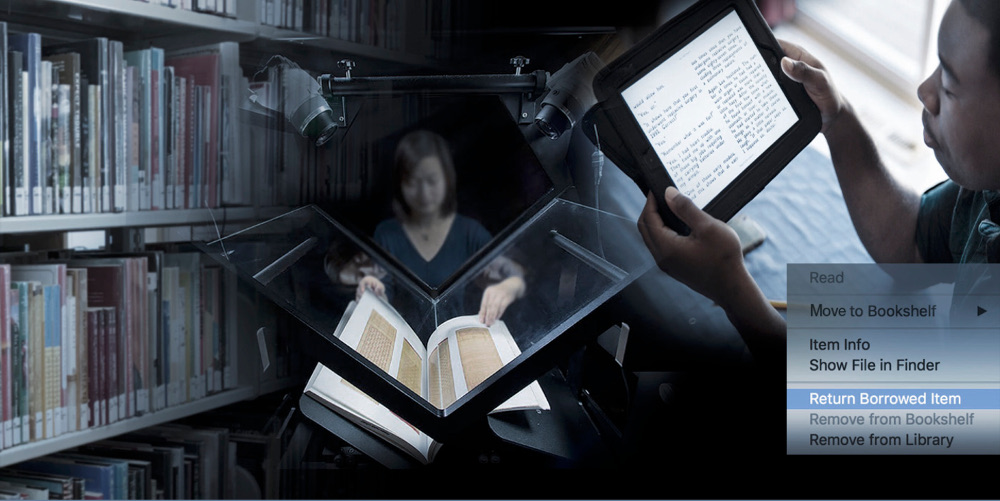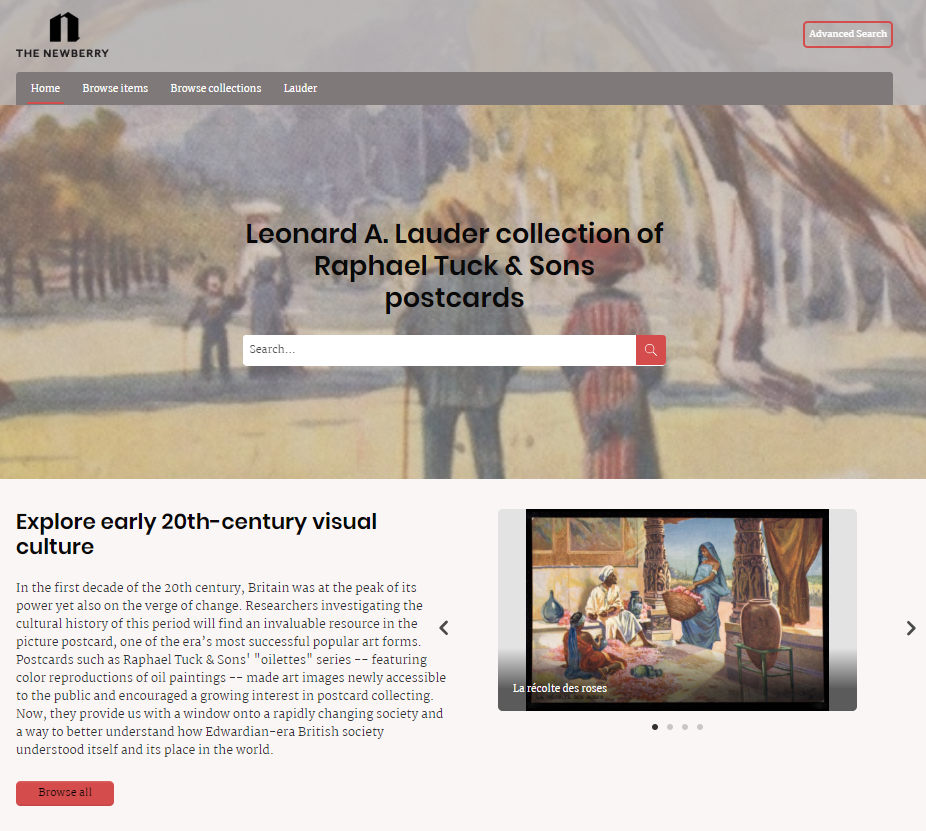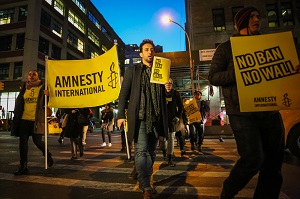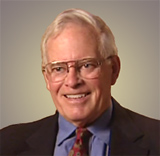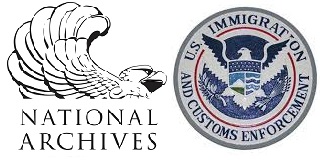Related
In March 2018, the Massachusetts Institute of Technology (MIT) Libraries hosted a working summit on Grand Challenges in Information Science and Scholarly Communication. After an open review period, the results were distilled into a final white paper, A Grand Challenges-Based Research Agenda for Scholarly Communication and Information Science, released December 18.
The Academic Libraries Video Trust (ALVT) this week announced that six universities have joined the organization as Founding Benefactors. The project, now live at videotrust.org, will facilitate the preservation of commercial video content available exclusively on VHS or other obsolete, deteriorating formats.
At the University of British Columbia, Vancouver, a partnership between the Department of French, Hispanic, and Italian Studies and the Library will provide new levels of access to a growing collection of original pamphlets from the French Revolution.
The Library of Congress (LC) last month launched crowd.loc.gov, a new crowdsourcing platform that will improve discovery and access to the Library’s digital collections with the help of volunteer transcription and tagging.
Copyright experts have begun building a framework for Controlled Digital Lending (CDL) with the recent publication of a white paper and an official position statement initially supported by forty individual and 24 institutional signatories, including major academic and public library systems, library consortia such as Califa Group, legal scholars, and organizations such as the Internet Archive.
Adam Matthew Digital, a SAGE company, has launched Quartex, a digital asset management solution designed to help libraries showcase archival collections.
Nonprofit human rights organization Amnesty International has chosen digital preservation company Preservica to create a global digital archive that will allow Amnesty to migrate, preserve, and provide access to more than half a century’s worth of records.
Hassan Ahmad, a Virginia-based immigration attorney, has filed a Freedom of Information Act (FOIA) request and a lawsuit to view the papers of John Tanton held at the University of Michigan’s Bentley Historical Library. Ahmad has argued that the material should be openly available, as it is relevant to current controversies over immigration policies.
The United States Immigration and Customs Enforcement agency (ICE) has requested that National Archives and Records Administration (NARA) Records Management sign off on a records retention schedule that would potentially destroy detainee records in 11 item categories, including accounts of solitary confinement, assault, sexual abuse, and investigations into deaths in ICE custody.
The Theodore Roosevelt Presidential Library and Museum Foundation has abandoned a proposal that would have split the museum and library between Theodore Roosevelt National Park and Dickinson State University.
Northeastern University (NEU) has launched the Boston Research Center, an addition to its library that will focus on interdisciplinary studies of Boston’s history.
Longtime archivist, former head of the Vancouver Public Library’s history division, and queer rights activist Ron Dutton donated more than 750,000 items documenting the British Columbia LGBTQ community to the City of Vancouver Archives in March.
Fifty years after the campus uprisings of 1968, college students are again raising their voices in activism—although as Project STAND, the online student dissent archive portal, demonstrates, those voices never went away.
Led by the District of Columbia Public Library, libraries are helping patrons save their mementos—and learn the basics of digital preservation in the process
As director of archives and special collections at Columbia University’s Barnard Library, Shannon O’Neill practices “radical empathy,” both in the materials she selects and in the way she interacts with colleagues. The concept of radical empathy in archival practice comes from Michelle Caswell and Marika Cifor’s “From Human Rights to Feminist Ethics: Radical Empathy in the Archives,” explains O’Neill. In practice, she says, “we allow ourselves to be open to and affected by one another, and we acknowledge and actively confront oppressive structures—ones that are colonial, carceral, and racist—in archives.”
Today, access to born-digital federal government information is relatively easy. Most of it is even available for free. But there are few legal guarantees to ensure that the information published today will be available tomorrow. Now, the GPO Reform Act of 2018 about to be introduced in Congress, pitched as a modernization of the Government Publishing Office (GPO) and the Federal Depository Library Program (FDLP), will actually endanger long-term free public access to government information.
“In middle school,” says Kristina Spurgin, “I taught myself to code in BASIC and repurposed the Address Book application that came with our Tandy Radio Shack 1000 EX to subject index my parents’ National Geographic collection—for fun. Now I have a spreadsheet that tells me when to start making bread, given the time I want to eat the bread and whether it’s chilly, neutral, or warm inside.” Unsurprisingly, Spurgin is meticulous in describing how initiatives she leads on the job improve upon existing processes and enable work that was previously impossible.
One of the newest courses on offer at the Massachusetts Institute of Technology (MIT) is “MIT and Slavery,” collaboratively taught by Steven Craig Wilder, Barton L. Weller Professor of History, and Nora Murphy, archivist for reference, outreach, and instruction. The undergraduate class will focus on researching MIT’s historical ties to slavery and the slave trade, as well as the role the slave economy played in other American engineering and science institutions.
After a group of middle schoolers from Wilmington, NC had the chance to share in the discovery of some rare primary source documents, transcribe them, and get an up-close look at the digitization process, North Carolina may have a few more aspiring archivists ready to help preserve its past.
On March 2—which would have been Lou Reed’s 75th birthday—the New York Public Library for the Performing Arts (NYPLPA) announced its acquisition of the late musician’s complete archives. The press conference, held at NYPLPA’s Dorothy and Lewis B. Cullman Center, in Lincoln Center, touched off a two-week celebration showcasing Reed’s work, including displays of selected items from the archives at NYPLPA and the Stephen A. Schwarzman Building, as well as several public programs.
Back in 1847, the founders of the New York Academy of Medicine (NYAM) probably didn’t imagine it would one day employ an archivist who in her spare time does aerial and circus arts, or uses its material as pages in a vast, online coloring book. But they never met Rebecca Pou.
At the 1964 summer Olympics in Tokyo, sprinter Marilyn White and her teammates won the silver medal in a relay event. She later became an elementary school teacher, genealogist, and motivational speaker.
The Andrew W. Mellon Foundation and the U.K.-based nonprofit Digital Preservation Coalition (DPC) in November 2016 announced the formation of a Task Force on Technical Approaches for Email Archives.
The Navajo Nation Library (NNL) is working to secure the funding necessary to digitize and catalog thousands of hours of stories, songs, and oral histories of the Navajo people, originally recorded in the 1960s by the Navajo Culture Center of the Office of Navajo Economic Opportunity (ONEO).
In the mid-1970s, the advent of the VHS format revolutionized the ability of libraries to collect and loan film. Now, collections developed during the 25-plus years of the format’s dominance present an impending crisis.
The team behind Chronicle—a new collaborative platform and community designed for photographers—has approached several libraries over the past six months to participate in the closed beta release of the platform. Users add recent photos or scanned archival prints to the platform via an app or web interface, where they are collected in chronicles focused on specific locations, events, or themes.
The Jerome Robbins Dance Division of the New York Public Library for the Performing Arts (LPA) is home to the archives and papers of such dance notables as Mikhail Baryshnikov, Isadora Duncan, and Merce Cunningham. In October, LPA acquired its first hip-hop collection with the archives of Michael Holman, New York dance impresario, filmmaker, musician, journalist, and television producer.
At her core, LJ Mover & Shaker Ludmila (Mila) Pollock is an archivist. As the executive director, library and archives at the Genentech Center for the History of Molecular Biology and Biotechnology at the Cold Spring Harbor Laboratory, she has been at the forefront of preserving the annals of scientific breakthroughs—through the stories of the people who made them.
In Los Angeles, anyone can be a star—even a library collection. The story of Lost LA, which draws on a Los Angeles library consortium’s local collections, proves that with the right tools (and a willingness to collaborate), libraries can reach an even wider audience.
Many libraries, archives and museums have in their collections textual artifacts that can no longer be read. Now a multispectral imaging initiative is uncovering value that can’t be detected by the human eye in ways that were previously only available to the largest and most deeply resourced institutions, and without having to take fragile manuscripts off-site.
Bob Dylan is one of the last century’s most influential, and legendary, musicians, with a career that spans from the early 1960s, when he began playing folk music in Greenwich Village clubs, to this year’s album Fallen Angels, expected to drop just before Dylan’s 75th birthday in May. Now Dylan’s archives—more than 6,000 items, including notebooks, drafts of lyrics, correspondence, unreleased studio and concert recordings, films, clothing, photographs, and business contracts—have been purchased by the George Kaiser Family Foundation (GKFF), a charitable organization based in Tulsa, OK, for an estimated $15–$20 million.
Librarian by day and award-winning filmmaker by night, Ashley Maynor combines the skills of both professions to create transmedia projects that offer new perspectives on librarianship and storytelling. Her 2015 web documentary The Story of the Stuff explores the fate of thousands of letters, cards, teddy bears, and other items sent to Newtown, CT, following the 2012 Sandy Hook Elementary School mass shooting. The outpouring of mail and donations can easily overwhelm local resources, says Maynor, digital humanities librarian at the University of Tennessee (UT), Knoxville. Her experience living in Blacksburg, VA, during the 2007 Virginia Tech massacre informs her work as well. “I saw how few resources exist for those who are trying to archive in the aftermath of tragedies,” she says.
The ePADD open-source email archiving and processing platform developed by Stanford University Libraries was awarded a $685,000 National Leadership Grant by the Institute of Museum and Library Services (IMLS), which will fund the project for an additional three years, enabling the developers to enhance ePADD’s usability, scalability, and feature set, in partnership with the University of Illinois Urbana-Champaign, Harvard University, University of California, Irvine, and the Metropolitan New York Library Council (METRO).
Social Purpose Corporation T160k recently launched “Cataloging the Timbuktu Libraries,” a crowdfunding effort to help train local staff in Mali and help librarians in Timbuktu’s Mamma Haidara Commemorative Library catalog and preserve more than 400,000 ancient, fragile manuscripts.
Cryogenically freezing the DNA of livestock animals might sound like a science fiction twist to Noah’s Ark, yet it’s the mission of a newly forged partnership called The Smithsonian and Swiss Village Farm (SVF) Foundation Biodiversity Project. The Smithsonian Conservation Biology Institute and the SVF Foundation announced in late July that they have joined forces to preserve rare and endangered heritage breeds of livestock, animals that our American forefathers raised for agriculture. Over the next several years, the SVF Foundation’s collection of frozen genetic materials will be incorporated into the Smithsonian’s vast genetic library of endangered animal species.
The American Museum of Natural History's (AMNH) research library last month hosted the official launch of its new online image database for Digital Special Collections. Begun as a project to digitize 1,000 of the museum's photos and rare book illustrations, the Digital Special Collections program has evolved into a long-term project that will offer the public free online access to the museum's research library collection. The new database includes more than 7,000 archival images, including photographs from 19th century scientific expeditions and illustrations from rare books dating back to the 16th century.
From the FCC: A record level of early financial support for broadband in schools and libraries has been approved by the E-rate program, the Federal Communications Commission’s program for supporting communications services in these institutions. Reflecting a dedicated effort by the FCC to get critical funding for broadband to schools and libraries as quickly as […]
With more than 200 breweries operating in the state, beer is big business in Oregon. But the Beaver State’s relationship with beer starts before the brewing process and reaches into the very soil. In addition to its profusion of breweries, Oregon is the breadbasket of the world’s beer industry, supplying hops—the flavorful flower that gives beer its bitter bite—to brewers around the world. Now, Oregon State University (OSU) is making a place for the state’s storied history in the brewing world at the newly minted Oregon Hops & Brewing Archive (OHBA).
A recent study commissioned by the Library of Congress found that, of the more than 11,000 silent films produced by American movie studios between 1912 and 1929, just 14 percent (1,575) survive today in their original domestic release. Another 11 percent are still technically complete, according to the study conducted by film archivist David Pierce, but only in imperfect formats. Some are repatriated foreign release versions that lack the original English subtitles and may have been edited to appeal to foreign audiences, which Pierce compares to imperfect retranslations of novels, where the story remains the same, but nuances may be lost. Others may be preserved on smaller format, 16 or 28 mm film stock, which can negatively impact image quality.
With the help of Operation Photo Rescue, a non-profit, volunteer network of photographers, image restoration artists, and graphic designers, Fondulac District Library (FDL), IL, recently launched “Saving Memories,” a program to help community members digitize and restore photographs that were damaged when 24 tornadoes touched down in Illinois on the night of November 17.
The South Carolina State Library (SCSL) has launched the South Carolina State Agency Social Media Library, a new project that will archive all tweets, Facebook posts, and YouTube content generated by the official accounts of South Carolina’s state agencies, while simplifying public access to this social media activity via a single online portal at scsocialmedialibrary.org. The portal and the archive were developed in collaboration with ArchiveSocial, a for-profit social media archiving company based in Durham, NC.
All of the Big Six publishers are now working with libraries on ebook lending in some capacity, but pricing and licensing terms remain unfavorable in many cases, Saturday’s “ALA, Ebooks, and Digital Content: What’s Next?” panel at the 2013 ALA Annual Conference and Exhibition in Chicago concluded. Meanwhile, concerns about long-term preservation of ebooks and [...]
Collaboration among libraries has been a grand tradition, but the need to collaborate has, perhaps, never been more pressing than now. The lack of available space, budget cuts, uneven usage, and availability of electronic resources and new technologies help give impetus to large-scale efforts, but there is a layer of collaboration that is less provocative and does not always receive the spotlight but which, nevertheless, is driven even more so by these factors and is just as integral to the future of libraries.
This country’s fascinating and invaluable patrimony of recorded sound and culture is at risk. Libraries, archives, museums, and historical societies have approximately 46 million recordings in their collections and more than six million are “in need” or “in urgent need” of preservation, according to the National Recording Preservation Plan released by the Library of Congress (LC) in December. The condition of another 20 million of the recordings is unknown, and these numbers do not include important material in private hands.
From a LC Announcement: The Library of Congress today unveiled “The Library of Congress National Recording Preservation Plan,” a blueprint for saving America’s recorded sound heritage for future generations. The congressionally mandated plan spells out 32 short- and long-term recommendations involving both the public and private sectors and covering infrastructure, preservation, access, education and policy [...]
Update Digital Preservation expert and Founder of LOCKSS, Dr. David Rosenthal offer some analysis of the amount of data the archive contains. Hat Tip: @lorcand — The Library of Congress is out with a blog post and white paper (embedded below) that provides info about the complete archive of tweets that Twitter donated to The [...]
The Digital Public Library of America (DPLA) and Europeana today announced the official launch of Leaving Europe: A new life in America, a jointly curated virtual exhibition that tells the story of European emigration to the United States during the 19th and 20th centuries. The exhibition includes digitized photographs, manuscripts, broadsheets, paintings, letters, audio, government documents, and other materials from U.S. and European libraries, museums, and archives, curated to describe the experiences faced by different groups emigrating from Europe to the United States.
The eMOP project led by Texas A&M will use page images from ProQuest's Early English Books Online and Early European Books, Gale Cengage's Eighteenth Century Collections Online, and other sources to create a database of early typefaces used in English books and documents, and then train optical character recognition (OCR) software to read these documents.
The Honorable Harold Baer, Jr., yesterday held that the HathiTrust’s mass digitization is fair use, in spite of the challenges raised in a lawsuit by the Author’s Guild and others, both associations and individual authors. Crucial to his reading of the case is Baer’s rejection of the plaintiff’s theory that section 108 of the copyright law prevents libraries claiming fair use as a defense. Baer said in his opinion, “I cannot imagine a definition of fair use that would not encompass the transformative uses made by Defendants’ MDP, and would require that I terminate this invaluable contribution to the progress of science and cultivation of the arts that at the same time effectuates the ideals espoused by the ADA.”
Brian Schottlaender, University Librarian at the University of California, San Diego, is a person who likes records. In a video produced for Preservation Week, he describes his personal collection and philosophy on preservation.
articles
ALREADY A SUBSCRIBER? LOG IN
We are currently offering this content for free. Sign up now to activate your personal profile, where you can save articles for future viewing

